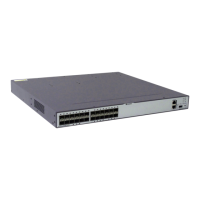11.1 MCE Overview
MCE isolates different services or users by using the route multi-instance on the CE.
Background
The Border Gateway Protocol (BGP) or Multiprotocol Label Switching (MPLS) IP VPN
technology transmits data of a private network in a public network by setting up tunnels. The
traditional BGP or MPLS IP VPN technology, however, requires that each VPN instance should
use a CE to connect a Provider Edge (PE), as shown in Figure 11-1.
Figure 11-1 Traditional BGP or MPLS IP VPN model
CE
CE
CE
Service
provider's
backbone
CE
VPN 1
Site
Site
Site
Site
VPN 1
VPN 2
PE
PE
PE
P
P
P
P
VPN 2
With increasing diversification of user services and higher requirements on the security, multiple
VPNs are required in a private network in most cases and services of different VPNs need to be
isolated. In this case, using a CE for each VPN increases the device expenditure and maintenance
cost; the security of data cannot be ensured if multiple VPNs share a CE and a route forwarding
table.
As shown in Figure 11-2, MCE can effectively solve issues of security of the data and network
costs in a VPN. MCE isolates services of different VPNs by binding VLANIF interfaces to
VPNs, and creating and maintaining an independent multi-VRF table for each VPN.
S6700 Series Ethernet Switches
Configuration Guide - IP Routing 11 MCE Configuration
Issue 01 (2012-03-15) Huawei Proprietary and Confidential
Copyright © Huawei Technologies Co., Ltd.
628

